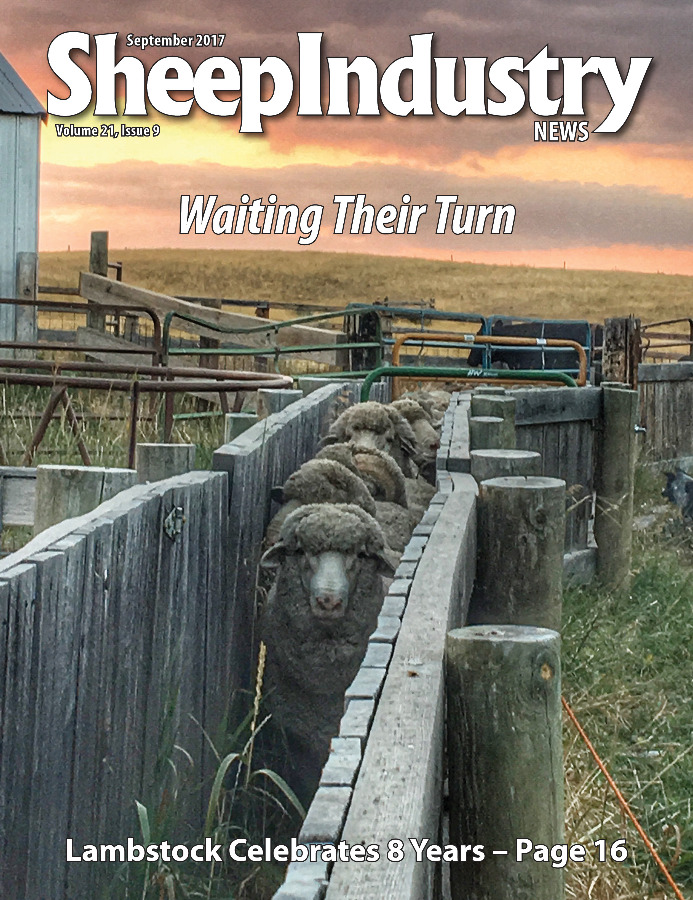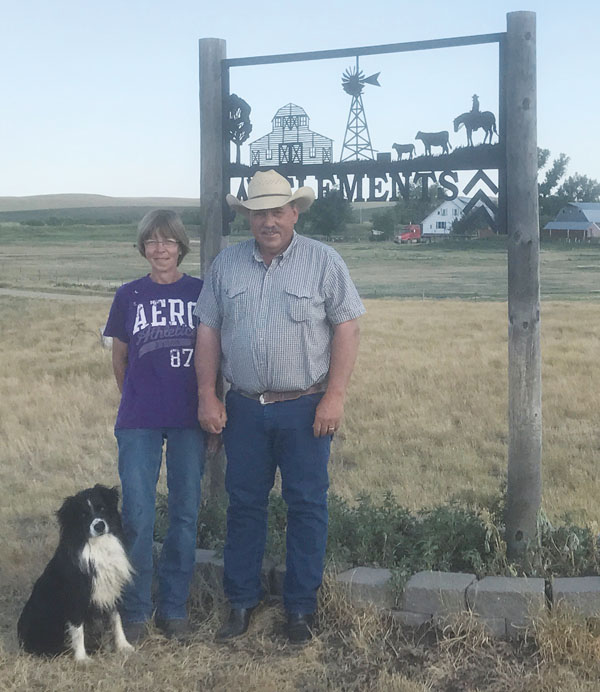
- September 2017
- President’s Notes
- AmericanWool.org Launches
- Priority 1: Parasite Resistance
- Lambstock 2017
- Kopanke Earns Scholarship
- Clements Perseveres in South Dakota
- Court Upholds Wyoming Grazing
- Industry Impact Study Available
- Committee Discusses H-2A
- Executive Board Meets in Park City
- Market Report
- The Last Word
Clements Perseveres in South Dakota
CHASE ADAMS
ASI Senior Policy & Information Director
On the plains of west-central South Dakota, the Clements Ranch – run by Steve and Pam Clements – has been in the family for three generations.
 In the sheep business for 110 years, Steve and Pam have continued the tradition, raising their family and running sheep and cattle. In addition to dealing with the challenges of mother nature, the Clements’ must also contend with predators robbing from the bottom line. As chair of the ASI Predator Management Committee, Steve understands the value of effective predator control.
In the sheep business for 110 years, Steve and Pam have continued the tradition, raising their family and running sheep and cattle. In addition to dealing with the challenges of mother nature, the Clements’ must also contend with predators robbing from the bottom line. As chair of the ASI Predator Management Committee, Steve understands the value of effective predator control.
“The USDA Wildlife Services’ aerial program is the most valuable tool we have left for predator control,” Steve says. “Every year the aerial program and the state trappers in South Dakota, take 8,000 to 10,000 coyotes. The ground programs are a big part of that success, as well.
“The M-44 coyote getter is the most targeted device we have. You lose a lamb or a calf to a coyote, and that’ll get them. Not only is it targeted, but it is effective. Set 100 of them and you’ll get 98 coyotes.”
In addition to sheep, the Clements also graze and feed cattle. A few years back they built a feedlot for 450 head of cattle.
“While cattle feeding has been a challenging business these past few years, the drylot has allowed us to expand our options for profitability and make better use of limited forage.”
Working on dry land has given the family an immense appreciation for what it takes to make a ranch viable in the face of rising input costs. Range improvements, adding protein and tonnage to pastures, are a major topic as they drive across a section interseeded with a handful of alfalfa varietals.
“Over a decade ago, we participated in a pilot program with the local extension service to drill alfalfa into this pasture,” Steve says. “It has worked great and made this one of my most productive pastures, even in the current drought.”
Steve also serves on the Haakon County Commission, where his dedication to range improvement and good land stewardship help guide county policy. While innovation has provided improvements in range and forage usage, there is still a healthy respect for past techniques, especially as it comes back to the perennial topic of predator control.
“The tools we used to have for predator control were much more effective,” he says. “I was probably 14 before I ever saw a coyote on the place. When they got rid of 1080, they took away one of the most effective tools we had for predator control.”
The Clements sell sheep annually at the Newell (S.D.) Sheep Yards and market their cattle through Philip (S.D.) Livestock or Ft. Pierre (S.D.) Livestock. The Clements raise Rambouillet ewes with Hampshire cross lambs.
“We’ve been raising crosses for 20 years or more. They seem to get heavier and grow faster on the grass here.”
As Steve proudly points out, they produce “good quality wool – 22.5 micron – which has gone into the military market.”

